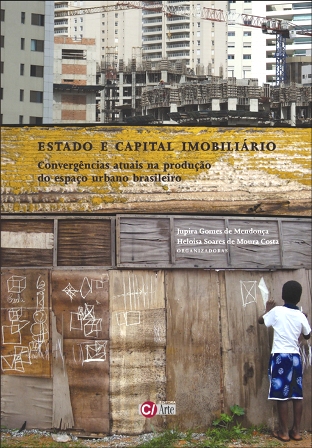)
isbn | 8576541211
Estado e capital imobiliário: convergências atuais na produção do espaço urbano brasileiro
A coletânea é composta por 15 textos que analisam diferentes aspectos do processo de produção do espaço urbano brasileiro. O livro enfatiza a relação entre o Estado, aqui representando as políticas públicas e a regulação urbana, o capital imobiliário e os interesses sociais. Aborda as causas e consequências do dinamismo do mercado imobiliário, o papel da renda fundiária na exclusão socioespacial de parcela da população; destaca a força das empresas construtoras e do capital financeiro frente ao Estado e os entraves à solução dos problemas habitacionais do país.
Analisa ainda o Programa Minha Casa Minha Vida, mostrando as dificuldades de solução para a construção de habitações populares frente ao controle da terra e, consequentemente, da renda fundiária na composição do custo final das habitações, beneficiando o capital especulativo e imobiliário. Mostra o contraste entre o interesse popular e a força do mercado, a fraqueza ou dificuldades dos municípios em regular e controlar os processos de urbanização e de especulação. Analisa a segmentação socioespacial de diferentes formas: condomínios fechados, representação simbólica na localização, exclusão dos antigos habitantes em regiões de grande crescimento, processos de favelização e de parcelamentos irregulares. Discute ainda as dificuldades do controle ambiental e o papel da autoconstrução.
Synopsis
This collection consists of 15 texts examining different aspects of the production of urban space in Brazil. The book emphasizes the relationship between the state, in this case acting through public policy and urban regulation, real estate capital and social interests. It addresses the causes and consequences of dynamism in the real estate market, and the role of ground rents in the sociospatial exclusion of a portion of the population. It also highlights the relative strength of the construction companies and financial capital compared to the State, and the obstacles to solving the country’s housing problems.
The book analyzes the Minha Casa Minha Vida programme, showing the difficulties of constructing affordable housing in the context of land control and ground rents on the final cost of housing, benefiting speculative and real estate capital. It reveals the contrast between public interest and market strength, the weakness and difficulties of municipalities in regulating and controlling processes of urbanization and speculation. It analyzes different forms of socio-spatial segmentation: gated communities, symbolic representations of location, the exclusion of older people from areas of high growth, processes ‘favelization’ and irregular subdivision. It also discusses the difficulties of environmental protection and the role of self-construction of housing.
Link para o livro














